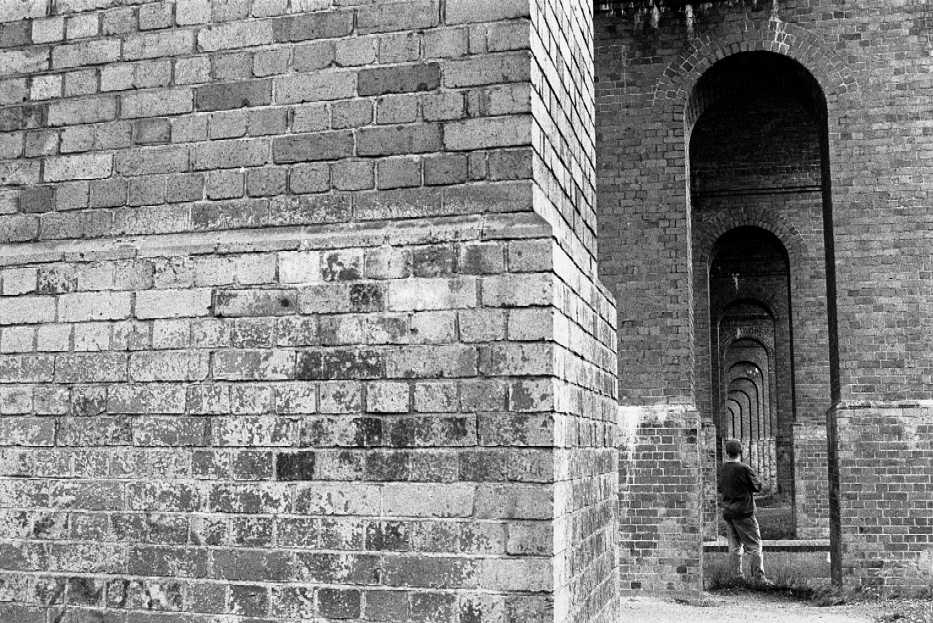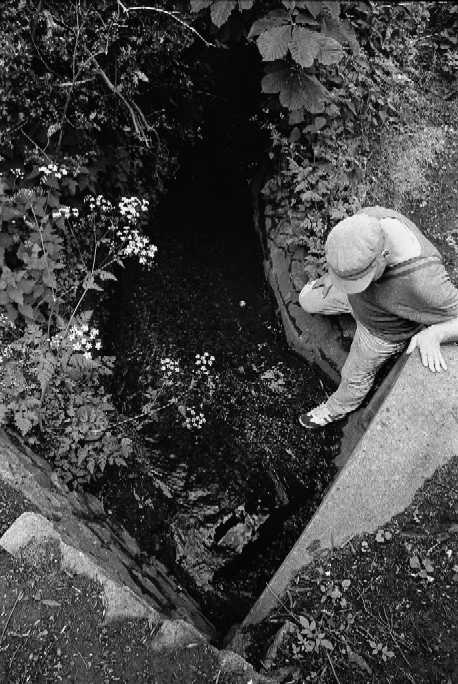The Pymmes Brook is the easternmost of the three great streams flowing through Barnet Borough on a north-south axis. It is formed from several streams rising to the east of Barnet off the Hadley Wood plateau and marks the east boundary of the borough as far as Southgate.
One of these sources fills the Beech Lake, on Monken Hadley Common, before running through a scrub/oak zone prior passing the houses on Baring Road. Later the brook becomes difficult to access as it runs between the houses of Park and Crescent Roads though glimpses can be seen here and there along its route.
The Pymmes is canalised through Brookside and then enters Oak Hill Park.
For many years Pymmes Brook lay hidden to me, tucked away in its valley and off the well-trodden track of my life. Drawn as I was to the green mass of the belt-lands over in Mill Hill I was familiar with the Dollis and its tributaries. Later, a period I spent living in Burnt Oak resulted in my introduction to the Silkstream. The Pymmes however was not “discovered” until 1999 when relative sophistication in walking techniques and a growing interest in regional history compelled me one day to walk up to Barnet and down along the riverways to Edmonton.
The result was one of those odd and inspiring dislocations where the unfamiliar manifests as an outgrowth of the well-known; a deep humility results from the awareness that one hardly knows their home, this coinciding with a sense of “throwness-into-being” and a revitalisation of drab habit and all-knowing laziness.

Beneath the Piccadilly Line
(B&W Photos: ©Peter Knapp)
Thinking back after that experience I was shocked at my not having noticed what was glaringly obvious. The road through from TallyHo to Barnet clearly runs on the spine of a ridge and whereas I had always had a clear sense of the drop to the west leading downhill to a river valley it had never occurred to think of the eastern drop in the same vein. And yet there it was, just beyond my zone of school days, my shoplifting forays to Whetstone and Chipping Barnet; the flat realism of my life veering dangerously, slanting on its precarious outcrop borne of vast geological pressure. Beyond the familiar books and music – though always implicit in their explorations, and their call to examine – a dark city rose, a trammelled clot of Life and Will.
I come to a new suburb after walking the damp dark wood and, finding it, am staggered to think how lost we all are, not even knowing our own city.
It is where the clean private streets with their distinctively flattened camber drop down to a stream running eastwards into marshes. It is where the small Methodist chapel with its cypresses and its dedicated benches has stood right through my time on earth, yet had never been declared, never before been made present for me.
Hence there is a throwness, an informing presence unmediated by habit, about the place this dark afternoon; a jutting-forth of these fine houses and shrubby traffic islands and the otherwise familiar letterbox on the scrubbed corner.
It is always like this when I stumble on the place-unknown just beyond the place-known. Starting out this afternoon at the old market town familiar since youth, I probed by edges of sports fields and crept through new estates. Up the hill, over the bridge and down by the saplings alongside the railway track. On a whim I turned left instead of right and went between villas to a strange place. It is at these times that the conditioned decades evaporate and a new, an urgent depth is attained, a new suburb uncovered.
I think about my mother, this Jose I also had to seek out by relying on instinct, working through family records filed in town, finally finding her trace in an unsuspected relative living in a hilly parish. It was another jutting-forth where this aunt lived, up on a red-roofed outcrop north of known zones, amidst swaying streets and vast gardens. On my first visit I stood outside her house, almost hiding behind the big silver car. I looked across at the near-mythic suburban streets, the flashing lines of 1930s homes. No memories surfaced of visits here far back in time and since forgotten. No resonance rose other than the bald knowledge of this woman’s existence in this place.
Eventually we met and talked and the unknown once more penetrated the known. I left hours later thinking about my late mother and her childhood, something I had known nothing about.
As I departed that night I imagined Jose walking to the cinema on Bowes Park, to the Catholic Church at Whetstone; heading towards the small-hour horror of breast cancer in the early 1970s. I hurt badly and needed any help I could find. Looking around I saw nothing but the closed face of the city. As winter came I wandered around the area more often. Slowly the obdurate suburb yielded. I couldn’t understand how a ten-minute walk down a dull-looking road took me from a suffocating high street known since birth to the windy lip of a hill and a view of endless roofs receding to clouds. Something terrifying hovered in the shifting spaces between the trees’ bare branches. It whispered through the bending grass on the playing fields. Displacement can kill: displacement can cure. Both can feel frighteningly similar.

Where the buried brook running down from North Finchley surfaces prior to running into the Pymmes.
I walk through to where homes of giddying wealth stand triumphantly in their own space. The little brook runs eastwards from off the glacial moraine. I am dazzled. I am so out of place I find it impossible to imagine the owners of these houses sharing any art, history or even bodily function with me, Jose or any of the others I once knew.
I ask an old gentleman sitting by the church the name of the brook. He doesn’t know. Later I find it is the Green Brook. The Green Brook! Has it waited long, this little stream whose course marks the boundary between the woods and the private estate? Has it really flowed patiently through all these years, Jose’s and mine, through wars and governments, shifts in youth culture and drama series on the goggle box? I follow it down to where it disappears beneath Sewit’s Hill, a vital hermetic impulse buried by decades of junk and torpor.
In the late 1960s Jose lived in Whitehall. Here was a place I should’ve remembered, should’ve known, even years later, being an experienced and critical Londoner. Yet it took me until my late midlife to find my way back to these severe and blitz-shattered canyons. Walking down Whitehall Court on a dark December afternoon I kept on thinking about those days back in 1968 when my sister, brothers and I journeyed up on filthy red tube trains to see my mum in her apartments.
It was lunch at the Golden Egg, or at a Wimpy bar near Charing Cross station. I was astonished that anybody could actually live so closeto Horseguards, that a room should contain a telly or a toilet within range of Parliament, that anybody would dare make love or everyday talk against a backdrop of the ancient and holy, at the epicentre of a Commonwealth.
In a way it was the same here, in this suburb now stilled by evening’s approach. Here was the place I should always already have known existed. Through the latticed windows brightly-coloured rectangles flickered in darkened rooms. A whole world enters where I cannot go and intelligent faces discuss the fate of nations. Evening laps up against rollered lawns and barren flowerbeds and is swallowed by a yawn.
As the firs darken – alien silhouettes against the fading sky – a robin sings, his voice warming like a little campfire. A light persists at these times. There is something taut something clean and sharp, like the facet of a diamond, in the sky. A little day is claimed back from the dark tides of the winter’s depth and the world begins to stock up for another grand offensive against entropy and death.
I head off, tracing a route through to my aunt’s house, several miles away. My Geographer’s Atlas of Greater London (1962) points the way from this new unknown to the recently unknown, now the new known.
Later I walk Cockfosters Road, where traffic roars and the manholes are still marked “MCC.” It is edged down one side by private roads I no longer dare enter. A tube train sparks over the steel railway bridge and the lines of cars halt, all red or yellow lights. Dark faceless crowds emerge from the station and scatter to bus stops and shops. These commuters seem like unreal people though the effect is one of purposive anonymity, rather than of futility or mutual disgust.
Opposite are the rising fields, the black oaks and snagged stumps of the older world. I think of the recently sighted “Beast of Enfield”, a large black cat said to live on the Chase. To cross to where the wet earth waits would be dangerous right now. The lights have changed once more and traffic is rushing past at high speed. To see these cars flash by, each a bubble of worries holding out the darkness of the Chase, is to see our world stretched over its abyss. The faltering day is a net, woven by our terms - a moment of mass hallucination, electrically lit, like the parade of shops, against the blackness of some silent, patient noumenal.

